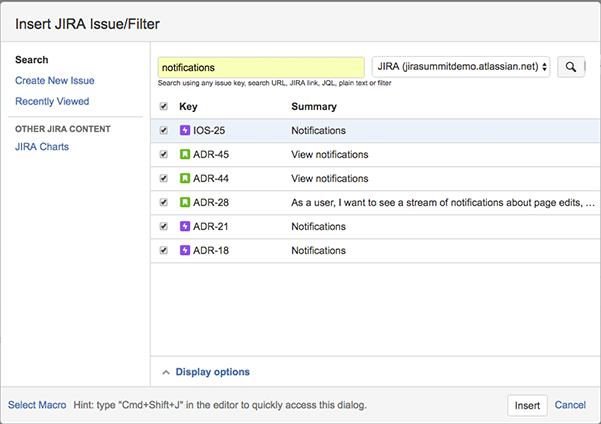
Skip to end of metadataGo to start of metadata
This is a document to help system administrators who need to understand what commands in systemd replace their old workflow in sysvinit. If you want general information on systemd, refer to systemd.

Services
| Sysvinit Command | Systemd Command | Notes |
|---|---|---|
| service frobozz start | systemctl start frobozz.service | Used to start a service (not reboot persistent) |
| service frobozz stop | systemctl stop frobozz.service | Used to stop a service (not reboot persistent) |
| service frobozz restart | systemctl restart frobozz.service | Used to stop and then start a service |
| service frobozz reload | systemctl reload frobozz.service | When supported, reloads the config file without interrupting pending operations. |
| service frobozz condrestart | systemctl condrestart frobozz.service | Restarts if the service is already running. |
| service frobozz status | systemctl status frobozz.service | Tells whether a service is currently running. |
| ls /etc/rc.d/init.d/ | systemctl list-unit-files --type=service (preferred) ls /lib/systemd/system/*.service /etc/systemd/system/*.service | Used to list the services that can be started or stopped Used to list all the services and other units |
| chkconfig frobozz on | systemctl enable frobozz.service | Turn the service on, for start at next boot, or other trigger. |
| chkconfig frobozz off | systemctl disable frobozz.service | Turn the service off for the next reboot, or any other trigger. |
| chkconfig frobozz | systemctl is-enabled frobozz.service | Used to check whether a service is configured to start or not in the current environment. |
| chkconfig --list | systemctl list-unit-files --type=service(preferred) ls /etc/systemd/system/*.wants/ | Print a table of services that lists which runlevels each is configured on or off |
| chkconfig frobozz --list | ls /etc/systemd/system/*.wants/frobozz.service | Used to list what levels this service is configured on or off |
| chkconfig frobozz --add | systemctl daemon-reload | Used when you create a new service file or modify any configuration |
Note that all /sbin/service and /sbin/chkconfig lines listed above continue to work on systemd, and will be translated to native equivalents as necessary. The only exception is chkconfig --list.
Aug 23, 2020 - Explore Emily Erwin's board 'Confluence', followed by 152 people on Pinterest. See more ideas about confluence, agile project management, project. The less your hands leave the keyboard, the faster you can be. We collected the most useful shortcuts for you on a cheat sheet that includes how to add emoticons and symbols and edit headings on the fly. 'My favorite Confluence shortcut allows me to. About Confluence Log in Acquisitions and Discovery (Public) Pages; Space shortcuts. How-to articles; Page tree. Configure Space tools. Attachments (0) Page History People who can view Resolved comments Page Information View in Hierarchy View Source.
Additional commands
In SysVinit, services can define arbitrary commands. Examples would be service iptables panic, or service httpd graceful. Native systemd services do not have this ability.
Any service that defines an additional command in this way would need to define some other, service-specific, way to accomplish this task when writing a native systemd service definition.
Check the package-specific release notes for any services that may have done this.Runlevels/targets
Systemd has a concept of targets which serve a similar purpose as runlevels but act a little different. Each target is named instead of numbered and is intended to serve a specific purpose. Some targets are implemented by inheriting all of the services of another target and adding additional services to it. There are systemd targets that mimic the common sysvinit runlevels so you can still switch targets using the familiar telinit RUNLEVEL command. The runlevels that are assigned a specific purpose on vanilla Fedora installs; 0, 1, 3, 5, and 6; have a 1:1 mapping with a specific systemdtarget. Unfortunately, there's no good way to do the same for the user-defined runlevels like 2 and 4. If you make use of those it is suggested that you make a new named systemd target as /etc/systemd/system/$YOURTARGET that takes one of the existing runlevels as a base (you can look at/lib/systemd/system/graphical.target as an example), make a directory /etc/systemd/system/$YOURTARGET.wants, and then symlink the additional services that you want to enable into that directory. Low level format windows 10playtree. (The service unit files that you symlink live in /lib/systemd/system).
| Sysvinit Runlevel | Systemd Target | Notes |
|---|---|---|
| 0 | runlevel0.target, poweroff.target | Halt the system. |
| 1, s, single | runlevel1.target, rescue.target | Single user mode. |
| 2, 4 | runlevel2.target, runlevel4.target, multi-user.target | User-defined/Site-specific runlevels. By default, identical to 3. |
| 3 | runlevel3.target, multi-user.target | Multi-user, non-graphical. Users can usually login via multiple consoles or via the network. |
| 5 | runlevel5.target, graphical.target | Multi-user, graphical. Usually has all the services of runlevel 3 plus a graphical login. |
| 6 | runlevel6.target, reboot.target | Reboot |
| emergency | emergency.target | Emergency shell |
Changing runlevels:
| Sysvinit Command | Systemd Command | Notes |
|---|---|---|
| telinit 3 | systemctl isolate multi-user.target (OR systemctl isolate runlevel3.target OR telinit 3) | Change to multi-user run level. |
| sed s/^id:.*:initdefault:/id:3:initdefault:/ | ln -sf /lib/systemd/system/multi-user.target /etc/systemd/system/default.target | Set to use multi-user runlevel on next reboot. |
Kernel Options:
The above systemd targets can be used when booting. At the GRUB menu, edit the selection to add 'systemd.unit=target' (without the double-quotation marks) as a kernel option where target is one of the above. (For example, 'rescue.target'.)


Tip: the '.target' extention is optional. The 'systemd.unit=rescue' kernel option works the same as 'systemd.unit=rescue.target'.
Shortcuts in Confluence are a way to improve your content creation and prevent unnecessary switching between pages. The less your hands leave the keyboard, the faster you can be. We collected the most useful shortcuts for you on a cheat sheet that includes how to add emoticons and symbols and edit headings on the fly.
'My favorite Confluence shortcut allows me to insert links and references to other Confluence pages easily: cmd + k. It became very useful and was a real time-saver when I was building the K15t website in Confluence and constantly needed to insert links to other pages or assets in the space.' - Shannon Meehan, Product Marketing Manager at K15t
'When it comes to editing in Confluence, I like to use the 'productivity combo', C to create a new page, Command+Shift+E to preview the page I'm working on, and Command+S to Save it. The preview one is very useful to easily check your page format while you are adding new contents. Hangman kangaroo game. ' - Jorge Merino, Product Specialist at Comalatech
'My productivity tip: 'watch blogs'. You can do this at two levels:

- a particular space
- or your whole site (done via your personal settings)
Settings > Email > Subscribe to all blogs
Why it helps me with my daily routine?
Blogs are often used for people to share announcements, celebrate success or share learnings across an organisation. They're also used to help everyone in your company to bring their whole selves to work - given them a voice to share what they're thinking. Here are three reasons why I've got a lot of benefits from them:
Confluence Macro Shortcut
1. It reduces email and improves discussion
Instead of all the 'reply all' people can watch the blogs they're interested in and follow along. If you're interested you can comment or react to blogs.

2. It gives everyone in the context bigger context
Because teams can easily link to content in Confluence for detail and do inline / contextual comments.
3. It helps a large organisation feel like a small team
When information flows freely, it makes it easier for everyone in your organisation understand the why and get context into decision making. If someone new starts, I can point them to prior blogs for context.
Confluence Shortcuts Cheat Sheet Pdf
Next time you're about to send an email to a big CC or TO list, think about writing a blog instead.' - Sherif Mansour, Distinguished Product Manager at Atlassian Command and conquer ultimate collection free.
Speed up your content creation by downloading a cheatsheet with these keyboard shortcuts:
